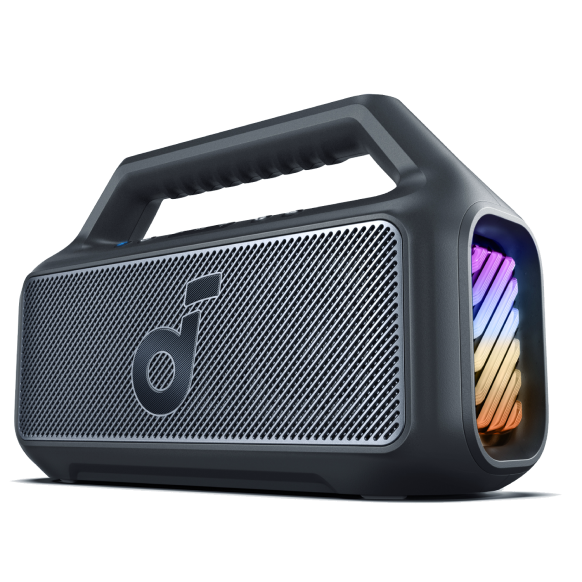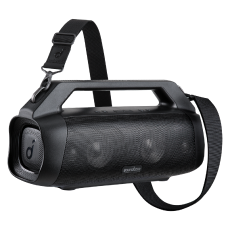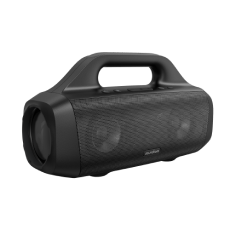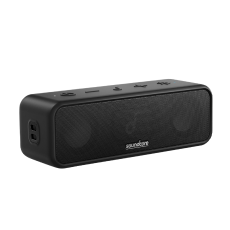Simple Guide on How to Fix a Blown Speaker
Have you ever experienced the frustration of turning on your favorite song only to be met with distorted or no sound? It’s not a good experience, especially during a party or an important occasion and in front of your guests. Understanding how to fix a blown speaker can save you from the hassle of replacing your audio equipment prematurely. This guide will walk you through the steps to diagnose, repair, and even prevent speaker damage, ensuring you can enjoy crystal-clear audio again.

What Is a Blown Speaker?
People who have experienced their Bluetooth speaker’s quality drop might ask: what is a blown speaker?
A blown speaker occurs when a speaker’s internal components fail, leading to distorted or no sound. It can be traced back to issues in the cone, voice coil, or suspension. When these parts are damaged, the speaker's ability to reproduce sound accurately gets compromised.
This issue can be frustrating, especially when one relies on high-quality audio output for an immersive listening experience. Wondering if can you fix a blown speaker, the good news is that there are many instances that it can be done.
How to Tell If a Speaker Is Blown?
Identifying a blown speaker involves recognizing signs indicating the internal components have failed. Here are the key indicators for how to tell if a speaker is blown:
- Distorted Sound: When a speaker is blown, one of the most noticeable signs is the distortion in sound quality. Instead of producing clear and crisp audio, the sound may become unclear, with noticeable buzzing, crackling, or hissing noises. This distortion often becomes more pronounced at higher volumes, where the speaker's inability to handle the audio signal becomes more evident.
- No Sound: A lack of sound is another clear sign of a blown speaker. A speaker connected to a functioning audio source without sound output indicates a significant failure. The internal components, such as the voice coil or the cone, might be damaged, so they cannot produce sound.
- Physical Damage: Visible damage to the speaker cone or other components can also indicate a blown speaker. This damage might include tears, punctures, warping of the cone, and burnt or melted parts in the voice coil. Physical inspection can reveal issues that might not be immediately noticeable through sound alone.
- Imbalance: A significant difference in sound quality between the speakers in a stereo setup is another indicator. If one speaker sounds clear and the other produces distorted or no sound, this imbalance suggests that one of the speakers is blown. Comparing the output of both speakers can help pinpoint the problematic one.
What Causes a Blown Speaker?
Understanding the root causes of a blown speaker repair can prevent future occurrences. Here are the common reasons:
Overpowering
Playing music at excessively high volumes can strain the speaker components. Speakers are designed to handle a specific power range; exceeding this limit can cause the voice coil to overheat. When the voice coil overheats, it can burn out or melt, leading to a blown speaker. Consistently playing music at high volumes without giving the speakers a break can accelerate this process.
Electrical Issues
Faulty wiring or connections can cause electrical surges that damage the speaker. Poor quality or damaged cables can create short circuits or introduce noise into the signal path, leading to irregular voltage spikes. These spikes can cause the voice coil to overheat or the cone to be forced beyond its mechanical limits, resulting in damage.
Physical Damage
Dropping or mishandling the speaker can lead to internal component failure. Physical impacts can dislodge the voice coil, tear the cone, or damage the suspension system. Even minor bumps can gradually affect the speaker's performance, leading to eventual blown speaker sound. Keeping speakers in a secure location and handling them carelessly can mitigate this risk.
Age
Over time, wear and tear can degrade the quality of the speaker components, leading to failure. Materials used in speakers, such as the cone and the suspension, can deteriorate with age and exposure to environmental factors like humidity and temperature changes. As these materials degrade, the speaker’s performance declines, increasing the likelihood of it becoming blown.

How to Fix a Blown Speaker?
Addressing how to fix a speaker that is blown involves steps that can restore the speaker’s functionality. Here’s a comprehensive guide on how to repair a blown speaker:
1. Diagnose the Problem
To diagnose a blown speaker, start by checking for obvious physical damage. Inspect the speaker cone for tears, holes, or any other visible issues. Listen for distorted or rattling sounds when the speaker is in use, as these can be indicators of internal damage. Additionally, test the speaker by swapping it with another one in your system to determine if the issue persists. Using a multimeter to check the speaker’s impedance can also help; a blown speaker might show an open circuit or a significant deviation from its rated impedance.
2. Repair or Replace Components
Once you’ve diagnosed the problem, you can proceed to repair or replace the damaged components. If the speaker cone is damaged, consider purchasing a recone kit specific to your speaker model. Carefully remove the damaged cone, voice coil, and spider, and clean the speaker frame thoroughly before installing the new components. For minor damages like small tears or holes in the cone, you can use a special speaker repair glue or adhesive to patch them. If the voice coil is damaged, carefully unwind and replace it with one that matches the original specifications.
3. Reassemble and Test
After repairing or replacing the damaged components, reassemble the speaker carefully. Ensure all connections are secure and properly aligned to avoid further issues. Once reassembled, reinstall the speaker in your system and make a blown speaker test at a low volume initially to ensure the repair was successful. Gradually increase the volume to verify that the sound quality has been restored and that the speaker functions correctly without any distortion or rattling.
4. Professional Repair
If the damage to your speaker is extensive or you lack confidence in your repair skills, consider seeking professional help. Professional repair services have the necessary tools and expertise to handle complex repairs and ensure optimal performance. Taking your speaker to a professional can save time and potentially prevent further damage that might occur from an incorrect repair attempt. This option is particularly advisable for high-end or expensive speakers where precision is crucial.
5. Upgrade to New Speakers
Replacing the speaker might be the best solution if the damage is extensive or beyond repair. For those seeking high-quality audio solutions, consider soundcore products. soundcore offers a range of speakers and earbuds known for their durability and exceptional sound quality. For example, the soundcore Boom 2 Plus boasts 140 watts of power through dual 4.5-inch woofers and dual tweeters, ensuring deep bass and clear highs. The speaker also features BassUp 2.0 technology, which enhances the bass for an impactful sound, ideal for parties and outdoor gatherings.
Additionally, this speaker includes advanced circuitry to prevent overloading and distortion, ensuring that the speaker won't blow out even at high volumes. Its IPX7 waterproof rating and floatable design make it perfect for poolside use.

FAQ
Does a blown speaker sound muffled?
A blown speaker typically produces a distorted or fuzzy sound rather than a clear and crisp one. The audio output can be inconsistent, with buzzing or crackling noises being common. This happens because the damaged components inside the speaker fail to vibrate correctly, resulting in poor sound reproduction. Muffled sounds might indicate other issues, such as dust accumulation or minor physical damage, rather than a complete blowout.
How to avoid blown speakers?
Preventing a blown speaker involves careful usage and regular maintenance. Avoid playing music at excessively high volumes for prolonged periods. Ensure all electrical connections are secure and free from faults. Handle the speakers gently, avoiding drops or impacts. Regularly clean the speakers to prevent dust accumulation, which can impact sound quality. Following these practices can extend the lifespan of your speakers and maintain their performance.
Conclusion
Knowing how to fix a blown speaker empowers you to restore your audio equipment to its former glory. By recognizing the signs, understanding the causes, and following a systematic repair process, you can prolong your speakers' life and enjoy superior sound quality. Whether you repair your speaker or invest in a new one, being informed will enhance your listening experience.














































